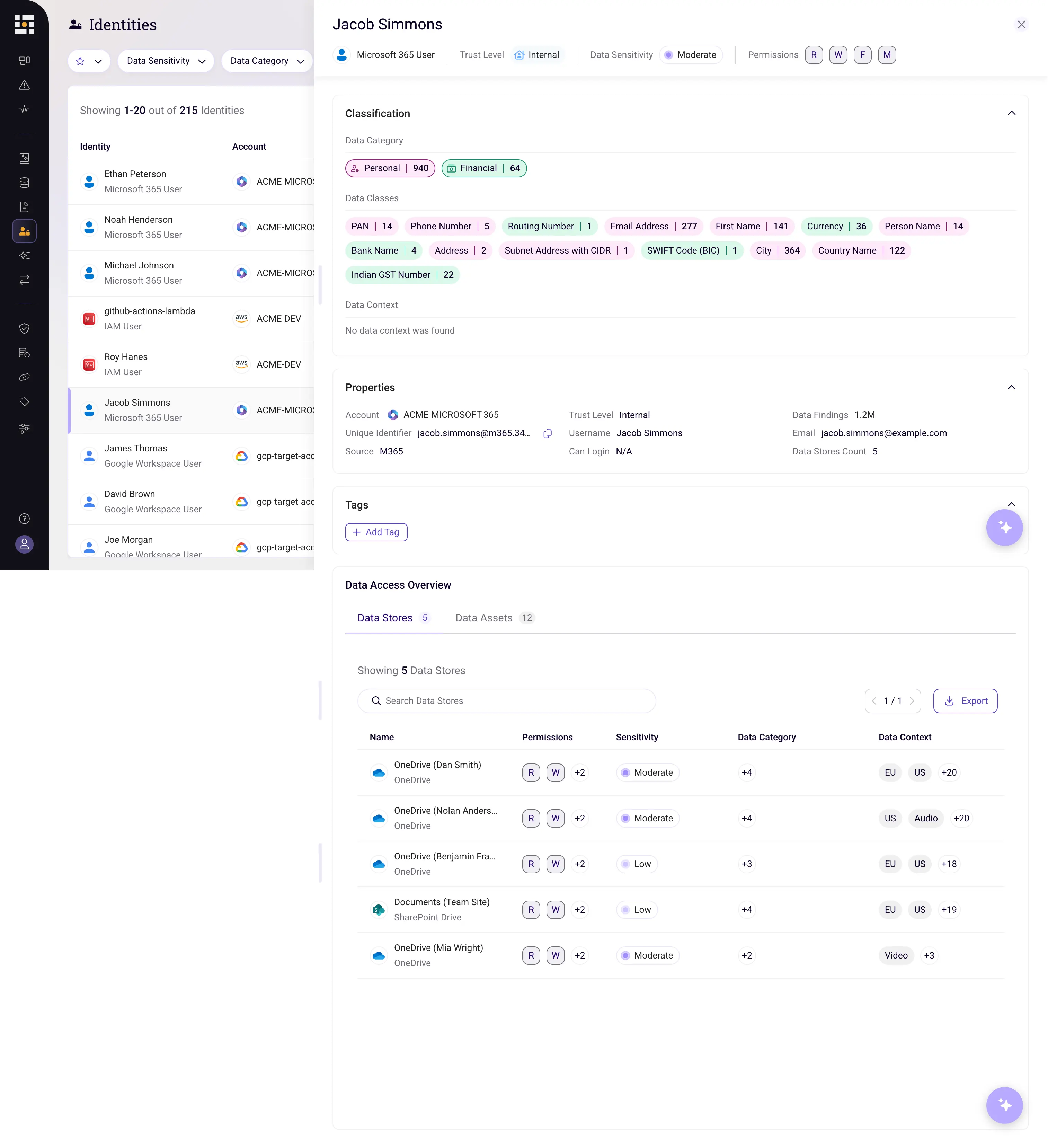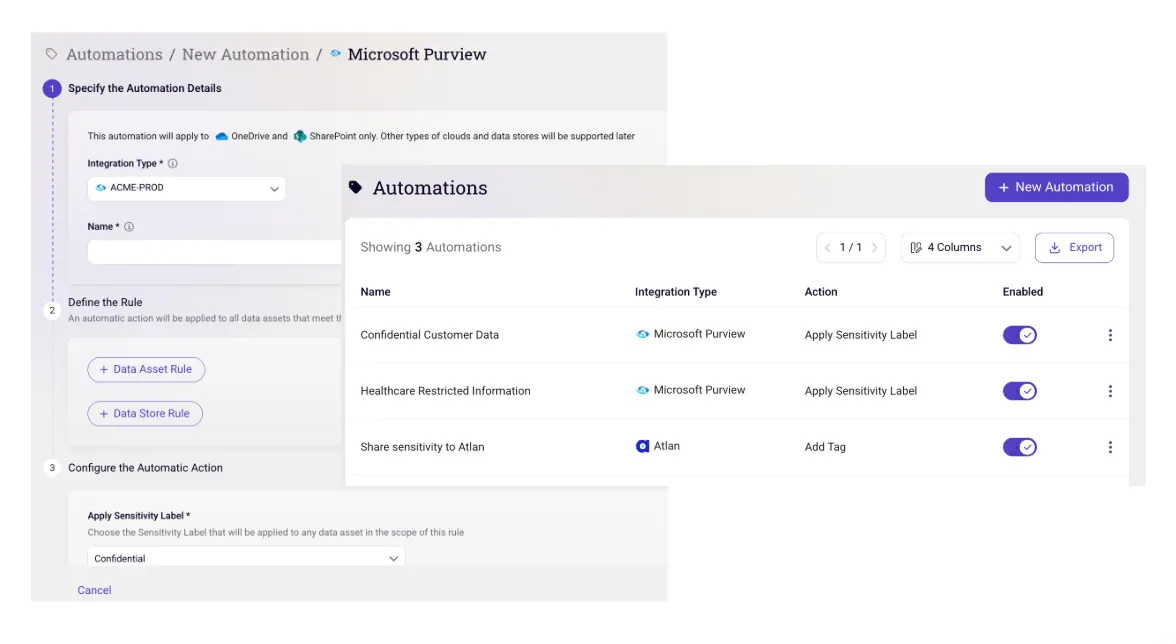Cloud Data Security Means Shrinking the “Data Attack Surface”
Traditionally, the attack surface was just the sum of the different attack vectors that your IT was exposed to. The idea being as you removed vectors through patching and internal audits.
With the adoption of cloud technologies, the way we managed the attack surface changed. As the attack vendors changed, new tools were developed to find security vulnerabilities and misconfigurations. However, the principle remained similar - prevent attackers from accessing your cloud infrastructure and platform by eliminating and remediating attack vectors. But attackers will find their way - it’s only a matter of "when".
Data attack surface is a new concept. When data was all in one location (the enterprise’s on- data center), this wasn’t something we needed to consider. Everything was in the data center, so defending the perimeter was the same thing as protecting the data. But what makes cloud data security vulnerable isn’t primarily technical vulnerabilities into the cloud environment. It’s the fact that there’s so much data to defend and it's not clear where all that data is, who is responsible for it, and what its security posture is supposed to be. The sum of the total vulnerable, sensitive, and shadow data assets is the data attack surface.
Reducing the Data Attack Surface
Traditional attack surface reduction is accomplished by visualizing your enterprise’s architecture and finding unmanaged devices. This first step in data attack surface reduction is similar - except it's about mapping your cloud data. Only following a successful cloud data discovery program can you understand the scope of the project.
The second step of traditional attack surface reduction is finding vulnerabilities and indicators of exposures. This is similarly adaptable to the data attack surface. By classifying the data both by sensitivity (company secrets, compliance) and by security posture (how should this data be secured) cloud security teams can identify their level of exposure.
The final step shrinking the attack surface involves remediating the data vulnerability. This can involve deleting an exposed, unused data store or ensuring that sensitive data has the right level of encryption. The idea should always be not to have more sensitive data than you need, and that data should always have the proper security posture.
3 Ways Reducing the Data Attack Surface Matters to the Business
- Reduce the likelihood of data breaches. Just like shrinking your traditional attack surfaces reduces the risk of a vulnerability being exploited, shrinking the data attack surface reduces the risk of a data breach. This is achieved by eliminating sensitive shadow data, which has the dual benefit of reducing both the overall amount of company data, and the amount of exposed sensitive data. With less data to defend, it’s easier to prioritize securing the most critical data to your business, reducing the risk of a breach.
- Stay compliant with data localization regulations. We’re seeing an increase in the number of data localization rules - data generated and stored in one country or region isn’t allowed to be transferred outside of that area. This can cause some obvious problems for cloud-first enterprises, as they may be using data centers all over the world. Orphaned or shadow data can be non-compliant with local laws, but because no one knows they exist, they pose a real compliance risk if discovered.
- Reducing overall security costs. The smaller your data attack surface is, the less time and money you need to spend defending it. There are cloud costs for scanning and monitoring your environment and there’s of course the time and human resources you need to dedicate to scanning, remediating, and managing the security posture of your cloud data. Shrinking the data attack surface means less to manage.
How Data Security Posture Management (DSPM) Tools Help Reduce the Data Attack Surface
Data Security Posture Management (DSPM) shrinks the attack surface by discovering all of your cloud data, classifying it by sensitivity to the business, and then offering plans to remediate all data vulnerabilities found. Often, shadow cloud data can be eliminated entirely, allowing security teams to focus on a smaller amount of data stores and databases. Additionally, by classifying data according to business impact, a DSPM tool ensures cloud security teams are focused on the most critical data - whether that’s company secrets, customer data, or sensitive employee data. Finally, remediation plans ensure that security teams aren’t just monitoring another dashboard, but are actually given actionable plans for remediating the data vulnerabilities, and shrinking the data attack surface.
The data attack surface might be a relatively new concept, but it’s based on principles security teams are well aware of: limiting exposure by eliminating attack vectors. When it comes to the cloud, the most important way to accomplish this is by focusing on the data first. With a smaller data attack surface, the less likely it is that valuable company data will be compromised.










.webp)

.webp)

.webp)
